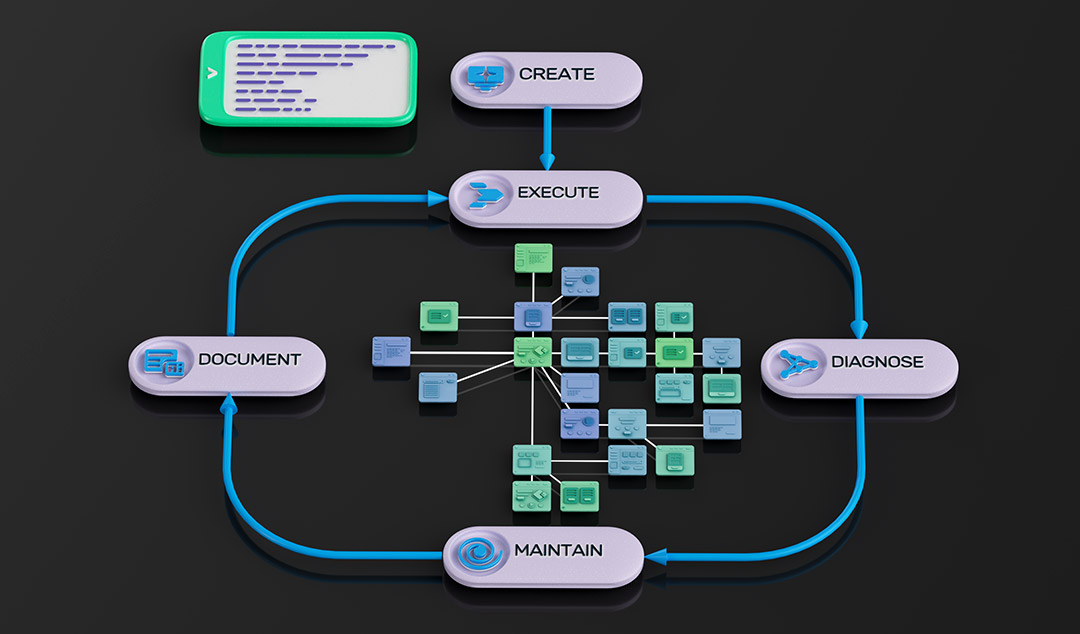The story of digital workers
The future of QA isn’t offshore—it’s no-shore. Discover how Functionize’s AI-powered Digital QA Workers redefine software testing, delivering unmatched speed, accuracy, and cost efficiency.

The QA function has undergone a fascinating evolution over the last 30 years. Initially, QA was performed onshore, embedded closely with development teams. But then, a new paradigm emerged—offshoring. QA functions were moved offshore because it was cheaper. Yes, quality and speed often suffered, but the cost savings were so compelling that organizations accepted the trade-off.
Fast forward to today, and we face a critical inflection point. "Is there a better way?" The truth is, we’ve reached the limits of cost reduction with human labor. There are no more low-cost countries left to tap into—unless we somehow discover a new civilization. The well of cheaper labor has run dry, and companies are now stuck in a cycle of diminishing returns.
So, what’s next?
The answer is Digital QA Workers—autonomous AI labor that redefines how QA functions operate. These AI-driven Digital QA Workers can replace your QA testing team, delivering the QA function at a cost that’s not only lower than outsourced human labor but at a quality level that no human team, in any market, can match.
Digital Workers don’t tire (take holidays or care about timezones), they also don’t miss steps, and don’t introduce the variability that human testers do. They’re faster, more accurate, and always available. They allow organizations to break free from the constraints of labor markets and redefine their QA strategy, moving from a reactive cost-cutting model to a proactive quality-first approach.
The future of QA isn’t offshore. It isn’t even nearshore. It’s no-shore—powered by Functionize!
Functionize has 5 AI Agents that perform the discrete tasks of a QA Tester. These agents, when working harmoniously together, create what we call a Digital Worker.
This Digital Worker, when fully realized, has the potential to displace multiple human QA testers, but the exact ratio of Digital Workers to human workers is not yet fully known. For some organizations, it might be a 1:1 replacement, while for others, it could be as high as 30:1. However, one thing is clear: replacing human QA testers with Digital Workers is not a one-time switch—it is a process, a journey, with distinct phases of transformation.
The Journey to Digital Worker Integration
This journey unfolds across three key phases, each with a typical timeline:
Phase 1: Implementation Phase (Shift to digital testing)
Timeline: 3-6 months:
In this initial phase, your QA team sets up Functionize and onboards their test cases into the platform. This includes configuring the system, ensuring stability, and aligning Functionize’s Digital Workers with the team’s existing workflows. Teams focus on training the AI to understand existing test scenarios and integrating the Digital Workers into the current QA processes.
Even in this early phase, organizations see significant productivity boosts, as the Digital Workers begin augmenting human efforts. For some organizations, this stage alone may provide enough value to justify the investment, and they may choose to remain here temporarily while assessing next steps.
Phase 2: Business Modernization
Timeline: 6-12 months
Once the system is stable and delivering measurable results, organizations enter the Business Modernization phase. Here, the partnership between Digital Workers and human testers evolves. With clear productivity metrics now available, companies evaluate opportunities for right-sizing their QA workforce and change testing processes to allow the AI agents to take on more responsibilities. Non-QA employees can begin to participate directly in testing.
This phase focuses on enabling Digital Workers to operate semi-independently, reducing the reliance on human intervention for repetitive testing tasks. As a result, organizations begin to lower QA operating costs while maintaining or even improving software quality and release velocity. It also enables the organization to broaden their test coverage achieving higher overall quality which is why it is a critical phase for scaling Functionize within the organization.
Phase 3: Digital Worker First
Timeline: 12-18 months
In this phase, organizations complete their transformation by enabling Digital Workers to lead the majority of QA efforts. A lean, highly skilled team of QA Operators (new role, just made it up!) remains to maintain the system, monitor the Digital Workers’ performance, and address any exceptions or edge cases.
This phase represents the ultimate goal of automation: achieving maximum efficiency and cost savings while maintaining a high-quality output. By this stage, the QA organization is transformed into an AI-led operation, where human oversight focuses on strategic decision-making and continuous improvement.
Total Journey Timeline
The full journey from Phase 1 to Phase 3 typically spans 18-36 months, depending on the organization’s size, complexity, and focus to embrace change.
Functionize doesn’t just replace human effort—it redefines it, enabling QA teams to scale and innovate like never before. This phased approach ensures that the transition is manageable, strategic, and aligned with your organization’s goals.











